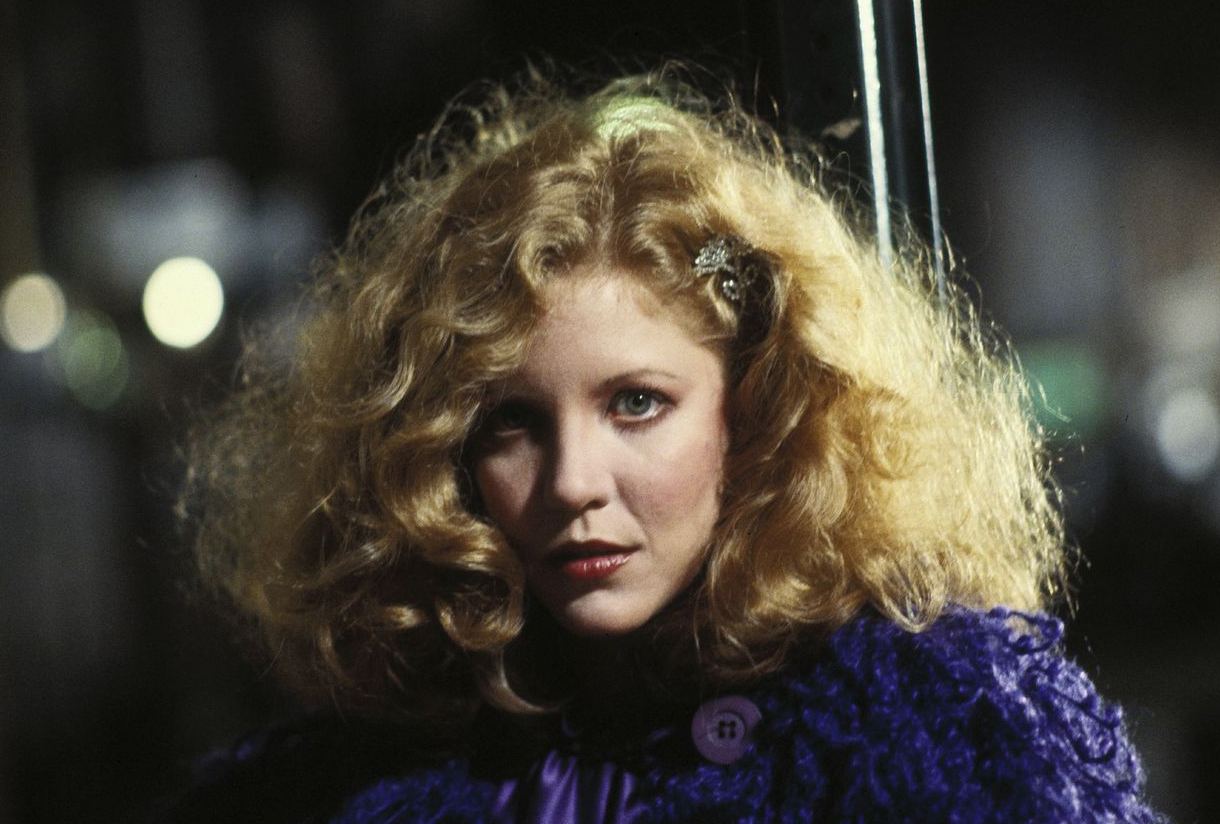Of all Brian De Palma’s films that pay homage to his most prominent inspiration, Alfred Hitchcock—a common and contentious topic when discussing his works—Dressed to Kill is high on the list, particularly for its similarities to Psycho. There are other reference points that help temper the tired accusations of De Palma’s idolatry-cum-mimicry, most notably self-referential markers like De Palma’s now-trademark use of split screens and split-diopters, and characters’ nerdy obsessions with gadgetry and technology. Giallo makes an unmistakable presence, too, in the form of a black-gloved mysterious killer, unbridled sensuality of female characters, shiny blades, bright, garish colors and an operatic score from Pino Donaggio
When it comes to Psycho, many similarities between the two films are seemingly intentionally superficial: both include transsexual psychopaths with dissociative identity disorder, horrifying shower scenes, voyeurism, doubles, MacGuffins and female leads butchered within the first act. Both films are not simply suspenseful, but structured meticulously around suspenseful set pieces. Other connections are thematic, demonstrable of De Palma’s predilection for recontextualizing Hitchcockian psycho-sexual preoccupations on his own terms, yet these artistic choices are difficult to articulate because of De Palma’s semi-jocular, exploitative and trademark bizarro style.
Dressed begins with a shower scene sex fantasy that blends softcore porn with cinematic impressionism: Kate Miller (Angie Dickinson) watches her husband shaving through the steamy shower glass door as she soaps her nubile body (clearly not Dickinson’s), her lathering becoming increasingly more masturbatory than an exercise in personal hygiene. Her husband suddenly appears from behind and penetrates her with aggression. Cut to: an actual sex scene between the married couple that is amusingly and cynically indicated—from Kate’s less-than-enthusiastic moans and the tediousness that is morning talk show radio—that she is less than satisfied with her sex life. She complains to her psychiatrist Dr. Elliott (Michael Caine) about her husband’s tiring, loveless “wham-bang specials,” going so far as asking the doctor to fuck her, which he rejects out of professionalism and loyalty to his wife. After playing a game of cat and mouse with a mysterious, handsome stranger she finds at the Metropolitan Museum (a set piece among De Palma’s finest), Kate finally gets what she wants: a good fuck, including a delirious cunnilingus session in the cab ride to the stranger’s home, which session is again, markedly satirical as her moans of pleasure (real this time) are sound-matched by aggressive car horns in New York City traffic.
Indeed, Kate’s female heterosexual desires are mocked by De Palma so thoroughly that one must question the film’s ideological position on the liberation of female sexuality, then a likely exhausted topic given the propensity of the sexual revolution of the decade prior to the film’s release. Upon Kate’s awakening from post-coital slumber she realizes her stranger lover has a venereal disease; in her flustered flurry to leave the apartment she attempts to return to retrieve her wedding ring but is slashed in the elevator by a mysterious blonde woman wearing sunglasses and a trench coat. This scene embodies the same claustrophobic intensity of the infamous Psycho shower scene, but De Palma has turned Hitchcock’s repression on its head. The original shower scene goes from a violent murder set in the private sphere that swims with moral and sexual implications into a rape fantasy, while De Palma’s own version of the slashing shower scene is set in the public, albeit confined, space of an elevator. For De Palma, sexual lust, deviancy and murder roam everywhere in public and in private, even if Dressed’s operatic, impressionable style indicates that certain scenes are purely set in the minds of characters (or the viewer’s).
The subsequent amateur detective investigation of Kate’s murder is performed by Kate’s tech-whiz son Peter (Keith Gordon) and high-class escort Liz Clarke (Nancy Allen), the only witness to the crime and who essentially replaces Kate as the film’s projection of threatening female sexuality. After Liz is followed by the shady woman several times and is almost killed by her, it is revealed that the woman is actually a cross-dressing Dr. Elliott, whose feminine split personality “Bobbi” is angered not only by Dr. Elliott’s refusal to have a sex operation, but by his heterosexual masculine desires for the two women who try to seduce him, Kate and Liz. The film’s most interesting reappropriation from Psycho is the silly, outdated, and offensive psychiatric explanation that closes Hitchcock’s film, which only serves as one of a few epilogues in Dressed. After Bobbi’s own psychiatrist explains the male/female fighting duality within Dr. Elliott/Bobbi, De Palma follows this up with another extra-expository scene in which Liz explains to Pete in graphic detail the penectomy that Dr. Elliott would not allow his feminine personality to have performed. This scene is another example in which De Palma actively satirizes the Freudian subtext of his predecessor’s works, and that of cinema in general; while Liz talks, an older woman overhearing the conversation in the background becomes visibly upset and repulsed. De Palma highlights this disgust not as a means to ratify such thinking, but to illuminate its dominance in society, even as he also actively hints at the violent sexuality simmering inside everyone.
The film’s conclusion—in which Dr. Elliott kills a nurse at an asylum and begins to do horrible things to her body with a crowd of deranged patients cheering him on, followed by a second shower scene in which Liz is killed by Bobbi, though it is revealed to be a nightmare—cements De Palma’s fascination with the blurring of fantasy and reality. It’s uncertain if Dr. Elliott’s continued bouts of deviancy at the asylum are part of Liz’s dream, though the scene’s histrionic cinematography, framing, and score undoubtedly detach it from the tonal expectations of reality. Much like the film’s opening rape fantasy, De Palma appears to be suggesting such macabre ideas and desires exist within everyone, whether or not we choose to acknowledge the voices consciously—not unlike the delusional Dr. Elliott.

